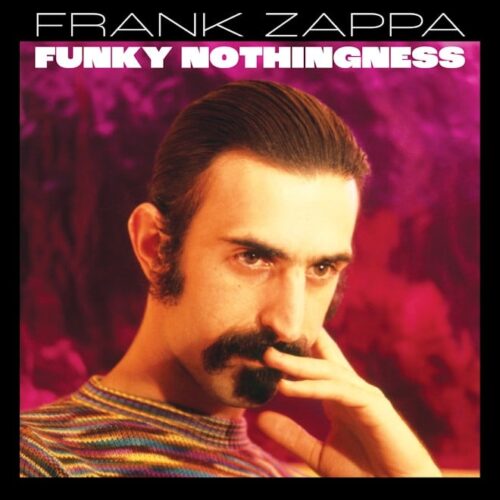In 1969, after The Mothers of Invention disbanded, Frank Zappa released his groundbreaking solo debut, Hot Rats. Fusing jazz and rock, the innovative album became one of the artist’s bestselling releases, thanks to classic tracks like “Peaches En Regalia” and “Willie the Pimp.” Over the following year, in between various projects (including producing Captain Beefheart’s debut, Trout Mask Replica, and emceeing Belgium’s Festival Actuel, where Zappa met British drummer Aynsley Dunbar), he assembled a core group to lay down tracks at Los Angeles’ recently opened Record Plant.
The sessions, which took place primarily in February and March 1970 at the new studio, featured Zappa once again in the producer’s chair and joined by several of the musicians that played on Hot Rats, including Mothers member Ian Underwood (keyboard, saxophone, rhythm guitar), violinist and vocalist Don “Sugarcane” Harris, and Wrecking Crew bassist Max Bennett. The five-piece band was rounded out by Aynsley Dunbar, who had just relocated to Los Angeles and moved in with Zappa following his invite to join the band. Together the group recorded hours’ worth of original compositions, inspired covers and extended improvisations that drew from Zappa’s R&B and blues roots, while blending influences of the emerging jazz fusion scene. Largely instrumental, these recordings showcased the guitarist’s virtuosity, while offering what could have easily been the sequel to Hot Rats, had it ever been released.
While Zappa identified his favorite takes and mixed the tracks for eventual release, the wildly prolific musician’s insatiable musical curiosity pulled him in other directions as the year wore on. It’s not known exactly why this material was never released but it’s possible that upon meeting Flo & Eddie, the comedy rock duo of Mark Volman and Howard Kaylan, shortly after the sessions, Zappa was inspired to work with them and assembled a bigger band and moved away from instrumental compositions and more toward vocally oriented material. Flo & Eddie would join the Mothers for Zappa’s Chunga’s Revenge album, recorded mostly that summer and released in October of that year. By the end of 1970, Zappa was well into writing and developing his film, “200 Motels” and the accompanying soundtrack. All the while this incredible material was put on the backburner.
Listening back to the tapes from these sessions, which have been unearthed from Zappa’s massive Vault more than five decades later, Zappa Vaultmeister Joe Travers and Ahmet Zappa knew that they had something special. Working with the tracks that Zappa had produced, mixed, and worked on over the years, they compiled an 11-track album, naming it Funky Nothingness after a bluesy, stripped-down piece that the artist had recorded in 1967 at the end of one of the sessions for Uncle Meat. Originally intended to open an early version of Chunga’s Revenge, the short, unreleased track “sets the tone for the album,” explains Travers. Although the track was recorded a few years before most of the music presented here, Zappa eventually connected it a build reel, signaling he was planning a release. While a couple recordings from these sessions have been released over the years (fans may remember the 12-minute version of “Sharleena” from 1996’s posthumous collection, Lost Episodes), Funky Nothingness introduces these recordings as a cohesive collection for the very first time. “Funky Nothingness, as an album, is special in that it features at least three written compositions, two cover versions and multiple instrumental jam-oriented segments, all previously unreleased,” Travers explains. “It’s very rare to find that amount of music from one set of sessions that has gone unheard for such a long period of time.”
Produced and compiled by Ahmet Zappa and Joe Travers, Funky Nothingness will be released June 30 via Zappa Records/UMe in a variety of formats, including a three-disc expanded deluxe edition that presents the 11-track album on disc 1 along with two discs of outtakes, alternate edits, unedited masters of songs from the era (“Transylvania Boogie,” “The Clap” and “Chunga’s Revenge” among them), plus several epic improvisations, and other “bonus nothingness.” An accompanying 28-page booklet includes photos from the recording sessions by photographer John Williams plus illuminating liner notes and an individual track-by-track by Travers. Disc 1 features Zappa’s vintage mixes alongside several modern mixes by Craig Parker Adams who also mixed the bonus material. All audio was mastered by John Polito at Audio Mechanics. In all, the 25-track collection includes 23 unreleased tracks totaling nearly three and a half hours of never-before-heard music. The expanded edition of Funky Nothingness will also be available digitally for streaming and download and as a double LP on both 180-gram black vinyl and limited edition clear violet 180-gram vinyl. The vinyl will consist of Zappa’s vintage mixes of the tracks.
